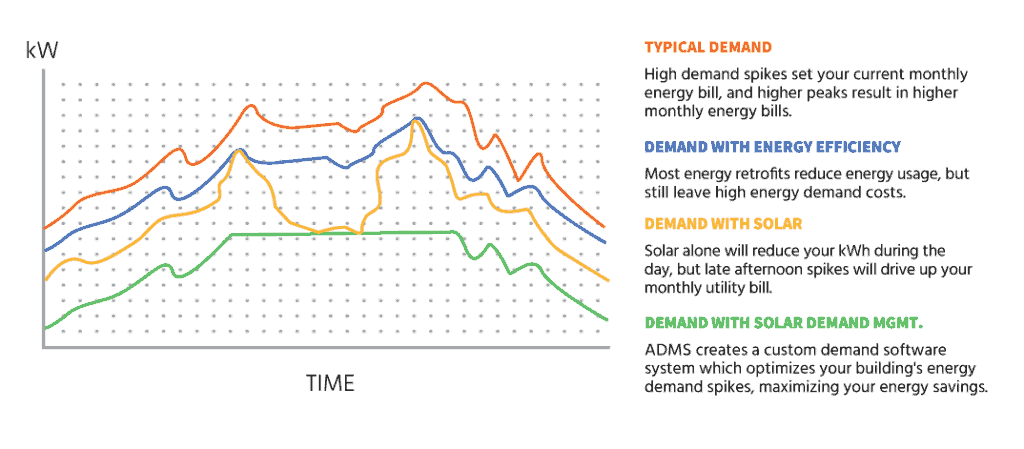It can sometimes be difficult to decide whether an energy retrofit would be viable for commercial businesses or nonprofits. There are some rare instances where they may not be as helpful, but, in almost all cases, energy retrofits can provide significant value to organizations who get them. Here are five key benefits of energy retrofits.
What is an Energy Retrofit?
Before we dive into the benefits, it’s important to understand what an energy retrofit is. An energy retrofit is essentially a project which entails installing engineered solutions that are specifically designed to meet the energy needs of your facility, with the goals of improving efficiency and producing energy savings. An energy retrofit could just involve installing LED lights, for example, but, typically, energy retrofits entail combinations of several forms of renewable energy, such as:
- Solar PV panels
- Upgraded HVAC systems
- Building Automation Systems (BAS)
- Combined Heat and Power (CHP)
- And more!
1. Improved Sustainability
In 2018, 11% of all energy consumption in the United States was powered by renewable energy, and about 17% of power generation was performed by the same source. Both of these numbers have grown over time, showing that people care about sustainability and making their organization and community greener. Improving sustainability can have major public relations benefits, as it is seen as a great way to contribute to local communities, and it can add an extra layer of trust from the consumer that your organization is ethical.
In one study, it was found that 56% of buyers will stop buying from brands they find out are unethical. That shows how much our society values good ethics. Improving sustainability is one huge way to project a positive image to your constituents and avoid the potential of losing their support. Also, reducing your organization’s carbon footprint is another huge benefit that would come with completing an energy retrofit.
2. Lower Utility Bills
Businesses and nonprofits alike often share a similar burden: they have to pay utility bills. On average, utility bills will set your organization back $2.10 per square foot. On face value, that may not seem so terrible, but for a nonprofit in a 10,000 square foot building, that’s an approximate cost of $21,000 (noting that this number will vary based on the building type, industry, and location). That’s a hefty fee!
Probably one of the biggest benefits of energy retrofits is that they can help significantly lower utility bills. Energy improvements like the ones listed above are used in retrofits to target the biggest charge on your utility bill; this is called the demand charge. Demand charges account for how much energy your facility actually requires to power its operations (during any 15 minute period). By targeting that expense category and installing improvements designed to have less electric demand, utility bills can be lowered substantially.
The ultimate impact will be on your organization’s bottom line, or for nonprofits, in their expenses.

3. Higher Property Values
One fact you may not know is that installing renewable energy sources like solar PV panels can increase your property’s value; this is not true for all energy improvements, but some, like solar panels, do add value as assets which can be included on your balance sheet. . For organizations looking at their property value long-term, this can be a huge benefit.
4. Tax Benefits and Other Incentives
Organizations looking to do energy retrofits can take advantage of a variety of tax benefits and related incentives which make the project more economically viable, such as tax credits, rebates, USDA grants and loans, power purchase agreements (PPAs) and more. Each has unique benefits, and while some can’t be utilized by nonprofits, there are plenty that can. For a more comprehensive list of financial incentives your organization could utilize, click here.
5. Less Stress on Utility Grid
By getting an energy retrofit, your organization could help to reduce the stress placed on your local utility grid. Electricity is not necessarily an unlimited resource, and the more stress placed on the grid, the worse it is for communities. Too much stress on an electric grid can cause extreme situations like blackouts or brownouts, or it could require utility companies or cooperatives to overhaul their infrastructures to meet the electric demands of their city/county.
By reducing the stress your organization is placing on the grid, you are making a positive impact on your community, ensuring that electricity will not be a scarce resource as time goes on.






